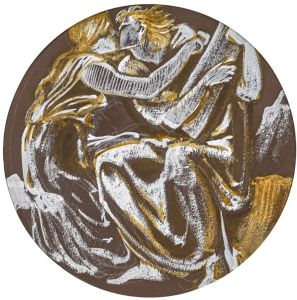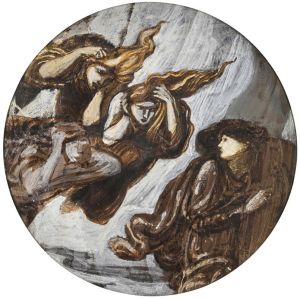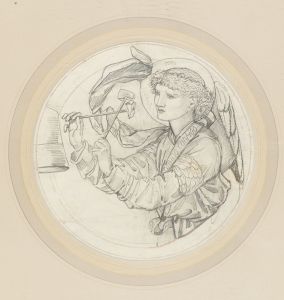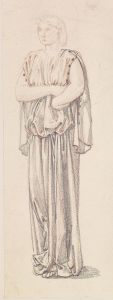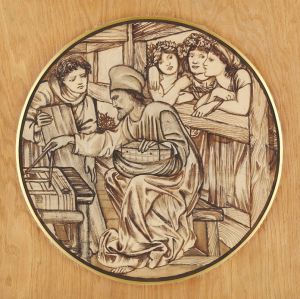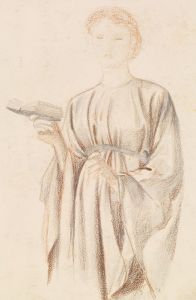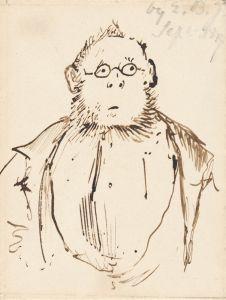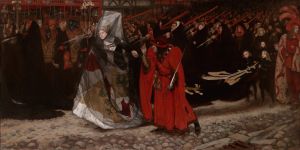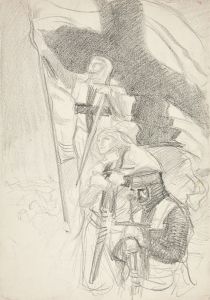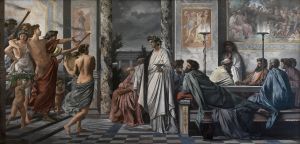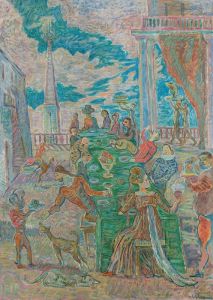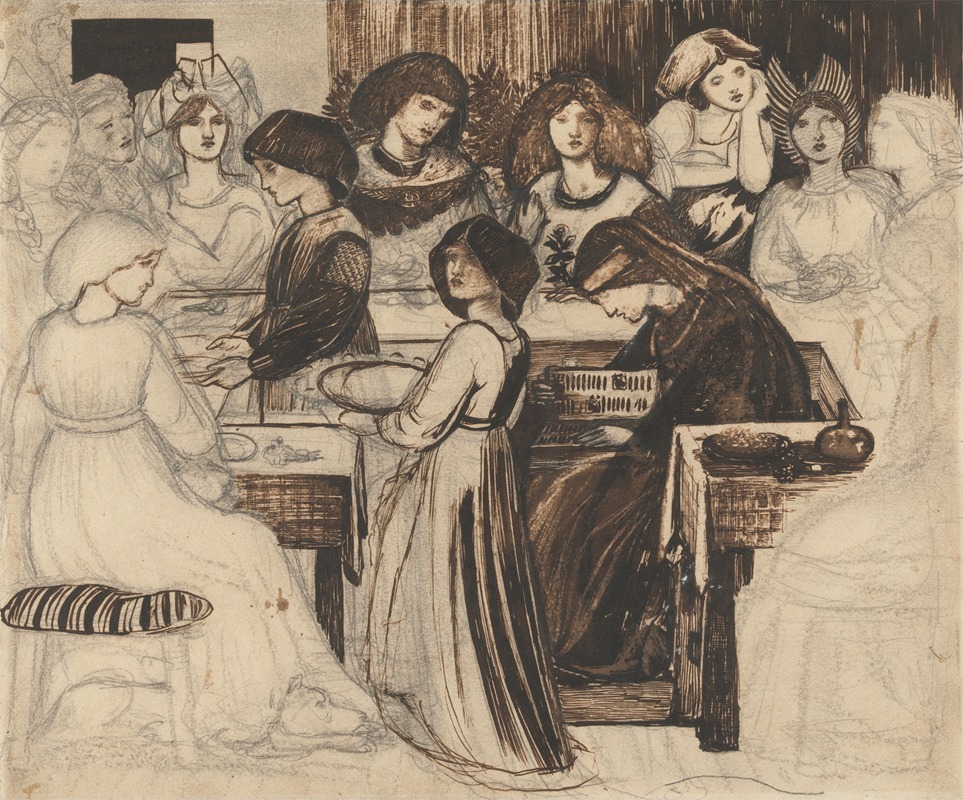
Study for The Wedding Feast of Sir Degrevaunt
A hand-painted replica of Sir Edward Coley Burne-Jones’s masterpiece Study for The Wedding Feast of Sir Degrevaunt, meticulously crafted by professional artists to capture the true essence of the original. Each piece is created with museum-quality canvas and rare mineral pigments, carefully painted by experienced artists with delicate brushstrokes and rich, layered colors to perfectly recreate the texture of the original artwork. Unlike machine-printed reproductions, this hand-painted version brings the painting to life, infused with the artist’s emotions and skill in every stroke. Whether for personal collection or home decoration, it instantly elevates the artistic atmosphere of any space.
"Study for The Wedding Feast of Sir Degrevaunt" is a preparatory drawing by the British artist Sir Edward Coley Burne-Jones, a prominent figure in the Pre-Raphaelite Brotherhood. This study was created as part of Burne-Jones's extensive body of work that often drew inspiration from medieval themes, Arthurian legends, and romantic literature.
Edward Burne-Jones was born on August 28, 1833, in Birmingham, England, and became one of the leading artists of the 19th century. He was closely associated with the Pre-Raphaelite Brotherhood, a group of English painters, poets, and critics founded in 1848 by William Holman Hunt, John Everett Millais, and Dante Gabriel Rossetti. The Brotherhood sought to return to the detail, intense colors, and complex compositions of Quattrocento Italian art.
The subject of "Study for The Wedding Feast of Sir Degrevaunt" is derived from the medieval romance "Sir Degrevant," a Middle English poem that tells the story of the knight Sir Degrevant and his various adventures, including his courtship and marriage to the lady Melidor. This narrative fits well within Burne-Jones's oeuvre, which frequently explored themes of chivalry, romance, and the idealized past.
The study itself showcases Burne-Jones's meticulous approach to composition and detail. As a preparatory work, it would have been used to plan the final painting, allowing the artist to experiment with the arrangement of figures, the interplay of light and shadow, and the overall mood of the scene. Burne-Jones's studies are often highly finished works in their own right, demonstrating his skill in drawing and his dedication to the preparatory process.
Burne-Jones's art is characterized by its dreamlike quality, with elongated figures, intricate patterns, and a sense of otherworldliness. His works often feature a muted color palette and a focus on the beauty and grace of his subjects. The study for "The Wedding Feast of Sir Degrevaunt" would likely exhibit these qualities, capturing the elegance and formality of a medieval wedding feast.
Throughout his career, Burne-Jones collaborated with other notable figures of the Arts and Crafts Movement, including William Morris. Together, they worked on various projects that aimed to revive traditional craftsmanship and integrate art into everyday life. Burne-Jones's influence extended beyond painting to stained glass, tapestry, and book illustration, making him a versatile and influential figure in the Victorian art world.
In summary, "Study for The Wedding Feast of Sir Degrevaunt" by Sir Edward Coley Burne-Jones is a preparatory drawing that reflects the artist's fascination with medieval romance and his meticulous approach to composition. It is a testament to Burne-Jones's skill as a draftsman and his commitment to the ideals of the Pre-Raphaelite Brotherhood and the Arts and Crafts Movement.





